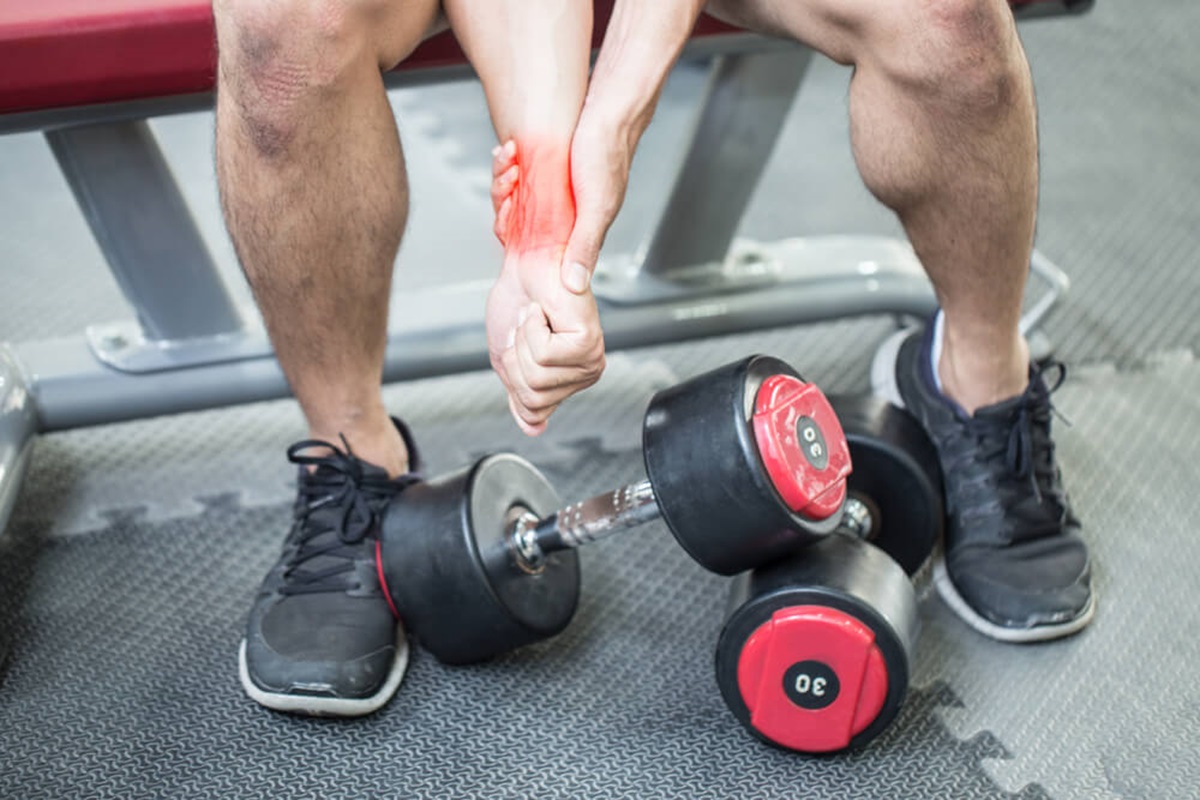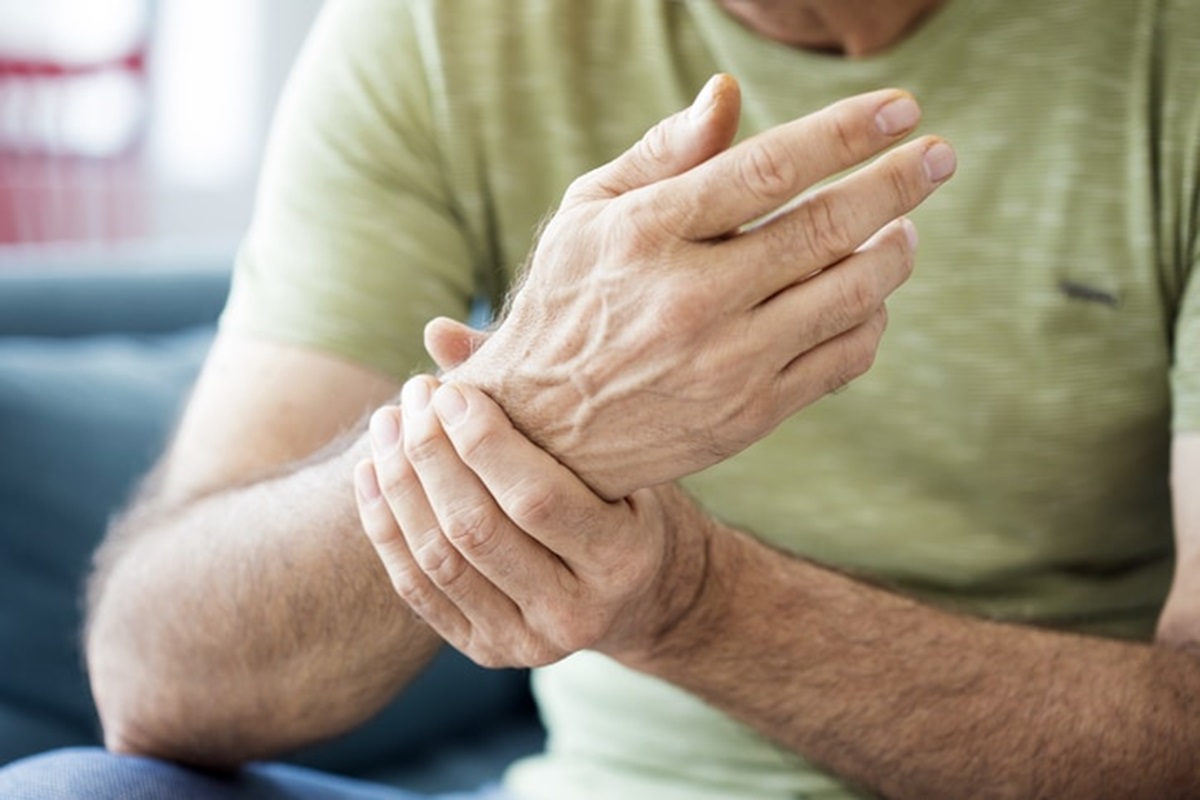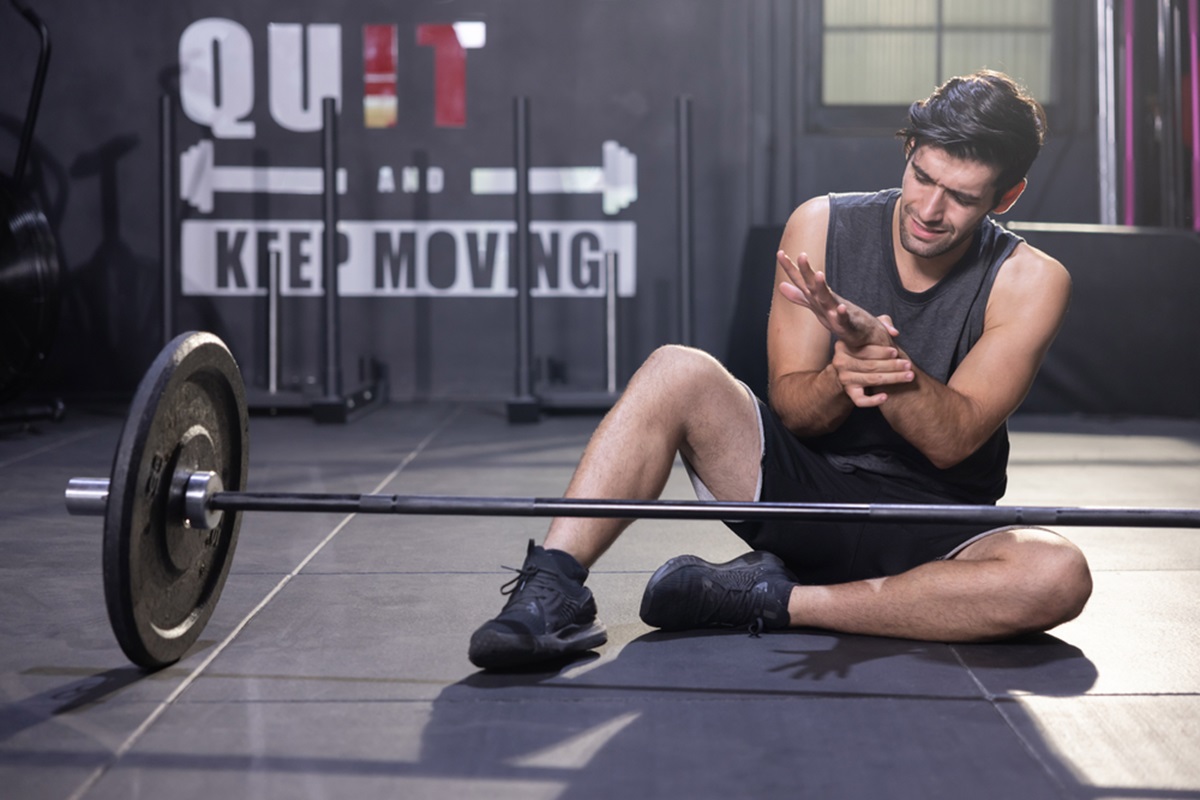Wrist pain from lifting weights can derail progress in the gym, whether you’re chasing PRs or just building strength. Many weightlifters struggle with nagging wrist issues, especially during compound movements like bench presses or the overhead press. But here’s the good news: this pain isn’t something you have to live with.
Understanding the root causes—like improper form, improper equipment use, or lifting too much weight—is key to preventing long-term damage. In this article, we’ll explore the most common causes of wrist pain from weight lifting, offer detailed solutions for how to stop wrist pain from lifting weights, and provide guidance on wrist rehab exercises, mobility, and wrist stability. Whether you’re dealing with an acute injury, overuse injuries, or just minor discomfort, we’ve got you covered.
Understanding Wrist Pain from Lifting Weights
Wrist pain during weightlifting often stems from a combination of biomechanical issues, poor technique, and repetitive stress. The wrist is a complex joint composed of many small bones, ligaments, and tendons that need to remain aligned and stable during heavy lifts. Notably, a significant portion of wrist and hand-related injuries—approximately 65%—have been observed in individuals engaging in CrossFit training for over a year, indicating how cumulative strain over time can lead to more serious problems if not addressed with proper technique and recovery strategies.
Early intervention is essential to prevent conditions like wrist tendonitis, TFCC (triangular fibrocartilage complex) injuries, or even wrist fractures. Minor discomfort ignored over time can escalate into a chronic condition requiring rehabilitation, medical treatment, or even surgical procedures.
Common symptoms include sharp pain, swelling, numbness, weakness, or popping sensations during lifts. If left unaddressed, these can evolve into long-term problems like carpal tunnel syndrome or de Quervain’s tenosynovitis—both of which require physical therapy for weightlifters and possibly injections, splinting, or bracing.
Common Causes of Wrist Pain in Weightlifters
Wrist pain rarely comes out of nowhere. These concerns aren’t just theoretical—real-world data reinforces their frequency. In a survey of 45 individuals within the weightlifting community, 43.3% reported mild wrist injuries, 50% experienced moderate issues, and 6.7% dealt with severe wrist conditions resulting from lifting heavy weights. This emphasizes how prevalent these injuries are and how vital it is to address their root causes early.
Here are the most common culprits behind this frustrating issue:
Poor Form During Lifts
Using improper form—like letting your wrists bend excessively during bench presses, curls, or rows—places unnecessary strain on the wrist joint ligaments and tendons. Without maintaining a neutral position, the joint is vulnerable to strain and overuse.
Excessive Strain or Overuse
Overtraining, performing repetitive movements, or lifting too much weight too soon without adequate rest leads to overuse injuries such as tendonitis and ligament strains. These are common in athletes who neglect rest days and don’t follow progressive overload principles.
Lack of Wrist Mobility or Flexibility
Limited range of motion in the wrists can negatively impact wrist positioning during lifts. Without sufficient flexibility, the body compensates with poor form, leading to stress on the small stabilizing muscles and increasing risk of wrist sprain or wrist overuse injury.
Misuse of Equipment or Improper Grip
Using improper equipment like thick bars, or relying too heavily on lifting straps or elastic material-based tools, can encourage bad grip and lifting techniques. Similarly, alternative grips that overextend the wrist may lead to joint instability if not executed properly.
How Lifting Weights Affects Your Wrists

Lifting heavy weights—especially during compound lifts—puts significant stress on the wrists, which act as critical stabilizers.
The Mechanics of Wrist Movement During Weightlifting
Movements like the overhead press or farmer’s carry require the wrists to support and stabilize under pressure. This places tension on the wrist joint ligaments, and without proper wrist alignment, injuries are inevitable.
Impact of Repetitive Strain on Wrist Ligaments and Tendons
Exercises involving repetitive movements stress the tendons, often leading to wrist tendonitis, TFCC injuries, or de Quervain’s tenosynovitis. These conditions result from inflammation and are typically seen in lifters who skip proper warm-ups or lack a tailored exercise routine.
Stress from Supporting Heavy Loads
Heavy lifts put direct pressure on the wrists. Without proper forearm engagement, wrist stability, or bracing, joints absorb forces they’re not designed to handle—setting the stage for acute injury or chronic pain.
How to Stop Wrist Pain from Lifting Weights
If you’re dealing with wrist discomfort during or after your workouts, it’s important to take action early. This section offers practical strategies for addressing the pain and preventing it from escalating into a more serious issue.
Key Strategies for Immediate Relief
When wrist pain strikes, quick and effective relief is essential to minimize inflammation and discomfort. These immediate interventions can help you manage symptoms and support the healing process in the short term.
- Rest and Ice for Inflammation: Taking time off reduces swelling and allows microtears in tendons and ligaments to heal. Applying ice after training sessions curbs inflammation.
- NSAIDs and Anti-inflammatory Medications: Over-the-counter NSAIDs like ibuprofen help reduce swelling and manage pain during acute flare-ups.
- Use of Wrist Supports or Braces: Wrist wraps, functional braces, or even a wrist brace provide temporary stabilization and limit harmful motion during lifts. These are especially useful during heavy benching or pressing days.
Effective Exercises to Prevent and Heal Wrist Pain
Targeted exercises can strengthen the wrist, improve mobility, and reduce the risk of future injuries. Incorporating these movements into your routine is essential for long-term wrist health and recovery.
- Stretching and Mobility Exercises: Include the wrist flexor stretch, prayer stretches, and wrist positioning exercises in your warm-up to improve range of motion.
- Strengthening Wrist Muscles: Use wrist curls, reverse curls, and resistance bands to build strength and prevent future strain.
- Foam Rolling and Massage Techniques: Regular soft tissue massage and forearm release can reduce muscle tightness that contributes to wrist alignment issues.
Modifications to Your Lifting Technique
Your form can make or break your wrist health. Small adjustments in wrist positioning, grip style, and lifting habits can significantly reduce strain and prevent further injury.
- Correcting Wrist Position: Maintain a neutral position during lifts to reduce shearing forces on the joint. Mirror feedback and guidance from a qualified trainer help ensure proper execution.
- Adjusting Grip Style for Wrist Protection: Switch to alternative grips like a neutral grip or use lifting straps judiciously to reduce wrist stress.
- Modifying Weightlifting Routines: Reduce direct wrist loading by alternating exercises or lowering volume. Opt for machines or dumbbells if barbell work is painful.
How to Get Rid of Wrist Pain from Lifting
If you’re looking for lasting relief from wrist pain, it’s crucial to go beyond temporary fixes. This section outlines sustainable approaches to eliminate wrist discomfort and restore optimal function.
Long-Term Solutions for Preventing Recurrence
Once your wrist pain is under control, the next step is making sure it doesn’t come back. Long-term success depends on smart training habits, consistent strength work, and preventative strategies.
- Consistent Wrist-Strengthening Routines: Include wrist stability strengthening programs and wrist rehab exercises in your training cycle.
- Gradual Increase in Weight: Apply progressive overload sensibly to avoid re-injury.
- Lifestyle Adjustments: Good posture, ergonomic workspaces, and reduced time on devices all support overall wrist health.
When to Seek Professional Help for Wrist Pain
Persistent or severe pain may indicate a deeper issue. Seek a healthcare professional such as a physical therapist, hand therapist, or orthopedic specialist if you experience:
- Numbness, tingling, or sharp pain
- No improvement with rest
- Suspected fracture, sprain, or diagnosis of carpal tunnel syndrome
They may recommend splinting, injections, or a rehabilitation plan tailored to your condition.
If you’re struggling with wrist pain from lifting and looking for expert, personalized care, Backcountry Physical Therapy offers specialized support tailored to weightlifters, CrossFit athletes, and active individuals. Our team of movement-focused physical therapists understands the demands of strength training and provides targeted treatments for overuse injuries, mobility issues, and lifting-related joint pain. Whether you’re recovering from wrist tendonitis, dealing with biomechanical imbalances, or simply want to lift pain-free again, Backcountry PT delivers results-driven care rooted in performance and prevention. Ready to take the next step toward pain-free training? Request an appointment today and start your journey to stronger, healthier lifts.
The Importance of Wrist Mobility and Flexibility

Maintaining wrist mobility is critical for long-term lifting success. Without adequate range of motion, your joints can’t achieve proper alignment, which affects all compound lifts.
Incorporate these into your routine:
- Dynamic Warm-Up: Prepares tissues for load and reduces injury risk.
- Wrist Flexor Stretch: Essential for releasing tension in the forearm.
- Mobility Drills: Wall slides, dowel rotations, and loaded stretching can improve overall joint health.
Wrist Support Devices for Lifting: Do They Help?
Wrist wraps and braces are popular tools among lifters, but when should you use them? Wrist wraps and braces can make a difference, especially during high-intensity lifts. Here’s a breakdown:
- Types of Support: From simple elastic material wraps to rigid functional braces, options vary in stability.
- Pros: Provide joint protection, improve wrist positioning, and enhance wrist stability during lifts.
- Cons: May hinder wrist joint ligaments from developing natural strength if overused.
Use wraps during heavy lifts but don’t neglect wrist stability strengthening programs.
Modifying Your Weightlifting Routine to Prevent Wrist Pain
Your programming and exercise choices have a direct impact on wrist stress. Making thoughtful modifications can help you avoid aggravating injuries and maintain consistent progress in the gym.
- Importance of Proper Warm-Up and Cool-Down: Include dynamic warm-up drills and post-workout soft tissue massage to prevent injury.
- Adjusting Exercises: Substituting machine work or dumbbell variations for barbell lifts can alleviate pressure.
- Alternate Lifts: Choose exercises that target similar muscles with less wrist strain, giving your joints time to recover.
Nutrition for Wrist Health and Injury Prevention
What you eat has a powerful effect on joint health and recovery. A diet rich in anti-inflammatory foods and key nutrients can support tendon repair and keep your wrists strong and resilient.
- Anti-Inflammatory Foods: Turmeric, berries, green tea, and fatty fish help fight inflammation.
- Essential Nutrients: Vitamin D, calcium, magnesium, and collagen support tendon and ligament health.
- Hydration: Keeps joints lubricated and enhances soft tissue elasticity, aiding overall wrist health.
Conclusion
Wrist pain from lifting doesn’t have to be the end of your progress. From identifying the cause to incorporating rehabilitation exercises, mobility work, and smart training choices, you can lift pain-free again. Don’t ignore warning signs—invest in your health through smart recovery, proper technique, and when needed, help from a physical therapist or orthopedic specialist.
FAQs
How to get rid of wrist pain from lifting?
Start by modifying your workouts, using wrist wraps, and incorporating wrist rehab exercises. Address any biomechanical issues and consult a healthcare professional if the pain persists.
How long does wrist pain from lifting take to heal?
Minor strains may resolve within 1–2 weeks with rest and recovery. More severe injuries like TFCC injuries or tendonitis can take 4–8 weeks or longer, especially if rehabilitation is needed.
Does wrist strain go away?
Yes, with proper treatment, rehabilitation, and avoiding further overuse injuries, wrist strain typically heals. Persistent pain requires medical attention to rule out conditions like carpal tunnel syndrome or fracture.



